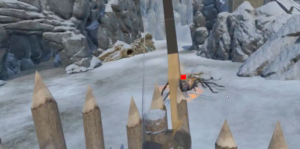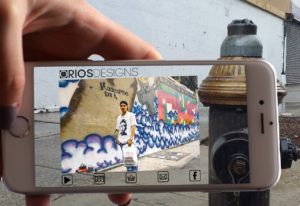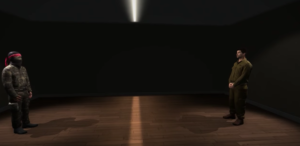
A screenshot from the QuiVr game.
One of the benefits of virtual reality is its ability to mimic the real world, but this also means that issues surrounding race and gender can cross over. Jordan Belamire describes being sexually harassed while playing a QuiVr game and feeling powerless. This is just one woman’s experience, but her piece ends by exploring how abuse like this should be handled.
“As VR becomes increasingly real, how do we decide what crosses the line from an annoyance to an actual assault? Eventually we’re going to need rules to tame the wild, wild west of VR multiplayer. Or is this going to be yet another space that women do not venture into?”
Read more analysis of Belamire’s article from The Guardian. In response, the creators of the game have made changes to help users feel safer.
The augmented reality tour Mi Querido Barrio (My Beloved Community) combats cultural and historical loss in East Harlem. The project, which is presented by The Caribbean Cultural Center African Diaspora Institute (CCCADI), uses the AR app Blippar. By pointing their phones at landmarks, users unlock photographs, artwork and other immersive features that highlight past sites, from a spiritual emporium to street art.

An example of the Mi Querido Barrio tour. Photo from the Caribbean Cultural Center African Diaspora Institute (CCCADI).
“It is a great way to not only educate, but preserve and connect. I think that the more people start using it, especially the younger generation, the more they are going to open their eyes and want to reinvent,” said Oliver Rios, one of the artists who participated in the project.
The release of Microsoft’s HoloLens next month is raising questions about the role that AR will play in technology, especially considering the relative high cost and inaccessibility of VR for a mass audience. Simon Parkin traces the history of AR, a concept invented by L Frank Baum, who also wrote The Wonderful Wizard of Oz. It wasn’t until almost a decade later, in the 1990s, when the prospect of AR in the real world was first talked about. Baum sees the success of Pokémon Go! as the next evolution of AR and highlights 10 other reality enhancing projects.
The new virtual reality experience “The Enemy” brings together the voices of two “enemies” Abu Khaled, a Palestinian fighter, and Gilad Peled, an Israeli soldier. The project, a collaboration between photographer Karim Ben Khelifa and digital media Professor Fox Harrell, highlights both the similarities and differences between

A screenshot from “The Enemy.”
Khaled and Peled. It goes “beyond the reach of traditional documentary film,” placing the user in a white room with posters of the two men on each side. “It should have a kind of lush imaginative vitality to it — a kind of lyricism,” said Harrell.
For fun: The Cleveland Museum of Art is the latest museum to explore VR with Studio Play, “a suite of experiences that lets visitors connect with the artwork in the museum as well as to the creative process of making the art.”
